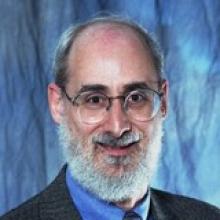Jerome Ackerman, PhD
Professional Information
Associate Professor in Radiology, Harvard Medical School
Assistant in Physics, Massachusetts General Hospital
Director, Biomaterials Laboratory, Martinos Center
PhD Physical Chemistry, MIT, 1976
Contact
Mailing Address
Building 149, Room 2320
13th Street
Charlestown, MA 02129 USA
Additional Information
Biosketch
We develop
instrumentation and methods for magnetic resonance applications in
interventional radiology and for studying bone and synthetic biomaterials.
We have developed a compact extremity (arm and leg) MRI scanner
based on a novel cryogen-free tilted superconducting magnet intended for
multinuclear solid state MRI measurements of bone matrix and mineral as a
radiation-free information-rich screening technique for metabolic bone disease.
Radically different in design from conventional superconducting MRI magnets, this
magnet has three bores: a central active bore and two side bores to accept the
unscanned leg, enhancing patient comfort. The magnet uses no liquid cryogens,
but rather is maintained at superconducting temperature with a cryocooler.
Recent work encompasses what we have named MRI Therapy, in which the
MRI scanner serves not only in its conventional diagnostic role, but
simultaneously also in an active role to carry out therapy. For example, MR
Radiofrequency Ablation employs the MRI scanner as a therapeutic tool by performing
tumor ablations with RF heating using the scanner as the energy source. Extending
this technology in a novel method called MR Coagulation, we coagulate
intravascularly delivered biomaterials using scanner-derived RF energy to
repair vascular defects. In both cases, the scanner guides the intervention and
monitors its progress and outcome, while also applying energy to conduct the
therapeutic procedure.
In the Biomaterials Laboratory we study bone and synthetic
biomaterials with conventional and solid state magnetic resonance imaging and
spectroscopy. Among the areas of interest are the compositional
characterization of bone during growth and maturation, and quantitative solid
state MR imaging of bone mineral and matrix to characterize metabolic bone
disease. Other materials of interest are dental materials and appliances, bone implant
materials, calcified tissues, polymers, ceramics and composites.



